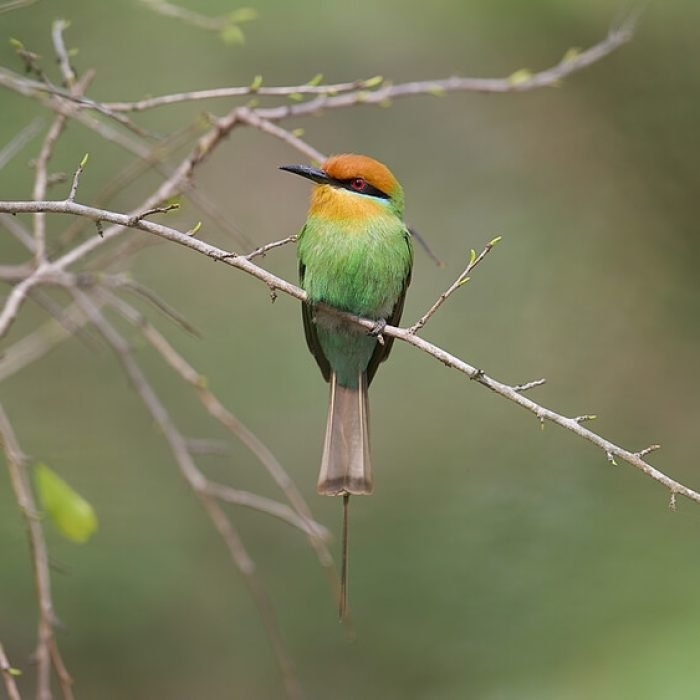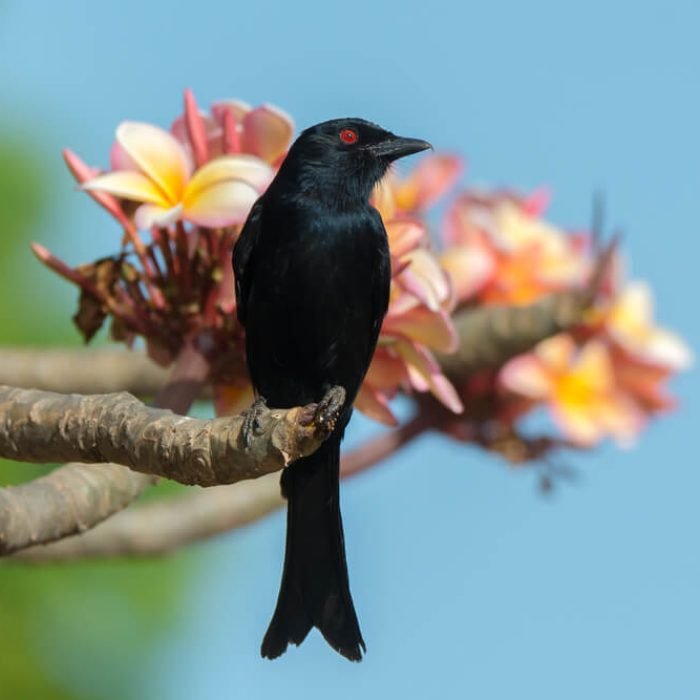Shoebill
- Balaeniceps rex
- IUCN Status: Vulnerable
- Trend: decreasing

General Information
The shoebill (Balaeniceps rex), is a large long-legged wading bird. It derives its name from its enormous shoe-shaped bill.
Description
The shoebill is a tall bird, with a typical height range of 110 to 140 cm and some specimens reaching as much as 152 cm. The adult is mainly grey while the juveniles are more brown.
The signature feature of the species is its huge, bulbous bill, which is straw-coloured with erratic greyish markings. The exposed culmen (or the measurement along the top of the upper mandible) is 18.8 to 24 cm, the third longest bill among extant birds after pelicans and large storks, and can outrival the pelicans in bill circumference, especially if the bill is considered as the hard, bony keratin portion. As in the pelicans, the upper mandible is strongly keeled, ending in a sharp nail. The dark coloured legs are fairly long, with a tarsus length of 21.7 to 25.5 cm. The shoebill’s feet are exceptionally large, with the middle toe reaching 16.8 to 18.5 cm in length, likely assisting the species in its ability to stand on aquatic vegetation while hunting. The neck is relatively shorter and thicker than other long-legged wading birds such as herons and cranes. The wings are broad, with a wing chord length of 58.8 to 78 cm, and well-adapted to soaring.
The plumage of adult birds is blue-grey with darker slaty-grey flight feathers. The breast presents some elongated feathers, which have dark shafts. The juvenile has a similar plumage colour, but is a darker grey with a brown tinge. When they are first born, shoebills have a more modestly-sized bill, which is initially silvery-grey. The bill becomes more noticeably large when the chicks are 23 days old and becomes well developed by 43 days.
Fun Facts
Zambia’s Bangweulu Swamps are one of the best places to spot shoebills in the wild. Unlike noisy herons or storks, shoebills are extremely patient and silent when hunting. They can stand motionless for hours, waiting to ambush lungfish, catfish, or even baby crocodiles with a lightning-fast strike! Their sharp-edged bill can decapitate prey in one snap.
Shoebills often hunt large fish (up to 1 meter long!) but struggle to swallow them quickly. This makes them targets for African fish eagles, which swoop in to steal their catches. Watching a shoebill battle an eagle over a giant lungfish is an epic wildlife showdown!
Shoebills build giant floating nests (up to 3 meters wide!) in deep water to avoid predators. Both parents fiercely guard their territory (2–4 km²) and use their bills to pour water on eggs to keep them cool in Zambia’s heat.
Ecology and Behaviour
The shoebill is noted for its slow movements and tendency to stay still for long periods, resulting in descriptions of the species as “statue-like”. They are quite sensitive to human disturbance and may abandon their nests if flushed by humans. However, while foraging, if dense vegetation stands between it and humans, this wader can be fairly tame. The shoebill is often attracted to poorly oxygenated waters such as swamps, marshes, and bogs where fish frequently surface to breathe. They also seem to exhibit migratory behaviors based upon differences in the surface water level. Immature shoebills abandon nesting sites which increased in the surface water level whereas adult shoebills abandon nesting sites which decreased in surface water level. It is suggested that both adult and immature shoebills prefer nesting sites with similar surface water levels.
This species stalks its prey patiently, in a slow and lurking fashion. While hunting, the shoebill strides very slowly and is frequently motionless. Unlike some other large waders, this species hunts entirely using vision and is not known to engage in tactile hunting. When prey is spotted, it launches a quick violent strike. However, depending on the size of the prey, handling time after the strike can exceed 10 minutes. Around 60% of strikes yield prey. Frequently water and vegetation is snatched up during the strike and is spilled out from the edges of the mandibles. The activity of hippopotamus may inadvertently benefit the shoebill, as submerged hippos occasionally force fish to the surface.
Diet
Shoebills are primarily fish-eaters but are formidable hunters capable of taking down a wide variety of wetland vertebrates. Their preferred prey includes lungfish such as the marbled lungfish (*Protopterus aethiopicus*) and African lungfish (*Protopterus annectens*), as well as Senegal bichirs (*Polypterus senegalus*), tilapia, and catfish—particularly those in the *Clarias* genus. However, their diet is not limited to fish; they also consume frogs, water snakes, Nile monitors (*Varanus niloticus*), and even baby crocodiles. On occasion, they may eat small turtles, snails, rodents, waterfowl, and carrion.
Equipped with a razor-sharp beak, massive bill, and wide gape, the shoebill can tackle prey much larger than what most other wading birds can handle. In Zambia’s Bangweulu Swamps, the fish they consume typically measure between 15 and 50 cm. Parents often feed their young catfish (*Clarias gariepinus*) and sizable water snakes ranging from 50 to 60 cm in length. In Uganda, lungfish and catfish dominate the chicks’ diet, while in Tanzania’s Malagarasi wetlands, shoebills frequently capture even larger specimens. Studies there revealed that fish measuring 60 to 80 cm were common prey, with the largest recorded catch being an impressive 99 cm long. When dealing with oversized prey, the shoebill will slice it into manageable pieces, swallowing them in stages—a process that can take anywhere from 2 to 30 minutes.
Despite their hunting prowess, shoebills sometimes face competition from African fish eagles (*Icthyophaga vocifer*), which are known to steal their hard-won catches, particularly when the prey is large and difficult to handle. This kleptoparasitism adds another challenge to the shoebill’s already demanding predatory lifestyle.
Reproduction
Shoebills are solitary birds, even in their breeding habits. Unlike herons, cormorants, pelicans, and storks—which often nest in colonies—shoebills typically have fewer than three nests per square kilometer. A breeding pair aggressively defends a territory spanning 2 to 4 km² against others of their kind. Nesting timing varies by location: in the northern and southern extremes of their range, they begin right after the rains stop, while in central regions, they may wait until the wet season’s end so that hatching coincides with the next rainy period.
Both parents collaborate in nest construction, first clearing a 3-meter-wide area before building a large, floating platform made of aquatic vegetation. This platform, often partially submerged in water up to 3 meters deep, supports a flat nest measuring 1 to 1.7 meters wide. The female lays one to three white eggs, each about 80–90 mm tall and weighing roughly 164 g. Incubation lasts around 30 days, with both parents sharing duties such as brooding, shading, guarding, and feeding. The female may be slightly more attentive. To combat high temperatures (30–33°C), shoebills cool their eggs by carrying water in their bills—first swallowing some, then gathering another mouthful before returning to pour and regurgitate the water over the nest.
Chicks are fed regurgitated whole prey directly into their bills. While multiple eggs may hatch, shoebills rarely rear more than one chick; the younger ones often serve as backups in case the eldest dies or is weak. Fledging occurs at about 105 days, with strong flight achieved by 112 days, yet parents may continue feeding the young for another month or longer. Sexual maturity takes three years.
Due to their elusive nesting behavior, researchers rely on remote cameras to study shoebills without disturbance. Early breeders gain an advantage, as their chicks receive extended parental care, improving survival odds.
Conservation
It is listed by the International Union for Conservation of Nature (IUCN) and BirdLife International as, “Vulnerable ” with the main threats being habitat destruction, disturbance and hunting. Habitat destruction and degradation, hunting, disturbance and illegal capture are all contributing factors to the decline of this species. Agriculture cultivation and pasture for cattle have also caused significant habitat loss.
Distribution and Habitat
The shoebill is distributed in freshwater swamps of central tropical Africa, from southern Sudan and South Sudan through parts of eastern Congo, Rwanda, Uganda, western Tanzania and northern Zambia. The species is most numerous in the West Nile sub-region and South Sudan. It is also significant in wetlands of Uganda and western Tanzania. More isolated records have been reported of shoebills in Kenya, the Central African Republic, northern Cameroon, south-western Ethiopia, and Malawi.
Vagrant strays to the Okavango Basin, Botswana and the upper Congo River have also been sighted. The distribution of this species seems to largely coincide with that of papyrus and lungfish. They are often found in areas of flood plain interspersed with undisturbed papyrus and reedbeds. When shoebill storks are in an area with deep water, a bed of floating vegetation is a requirement. They are also found where there is poorly oxygenated water. This causes the fish living in the water to surface for air more often, increasing the likelihood a shoebill stork will successfully capture it. The shoebill is non-migratory with limited seasonal movements due to habitat changes, food availability and disturbance by humans.
Interaction with Humans
This species is considered to be one of the five most desirable birds in Africa by birdwatchers. They are docile with humans and show no threatening behavior. Researchers were able to observe a bird on its nest at a close distance – within 2 meters.















